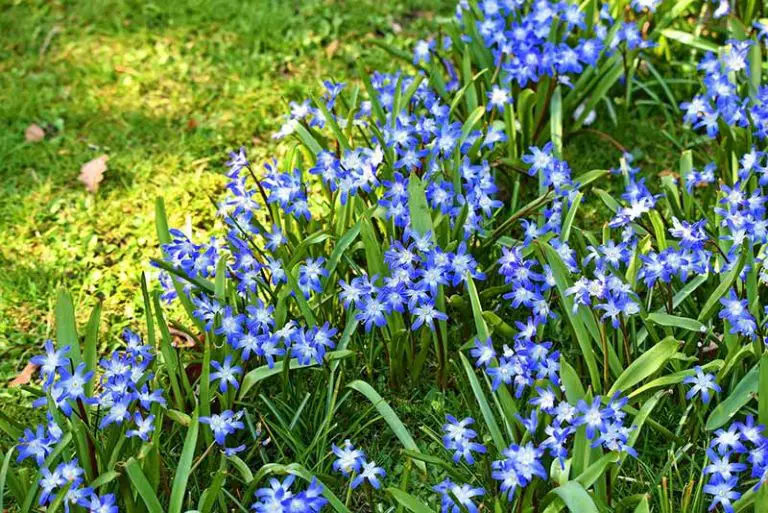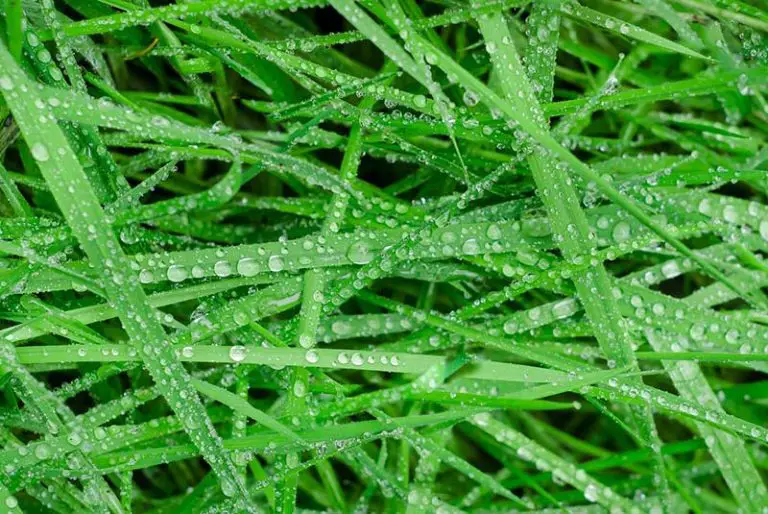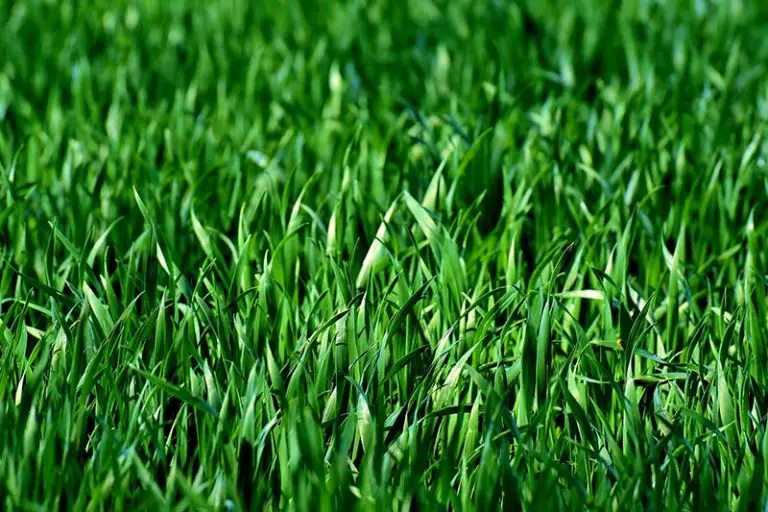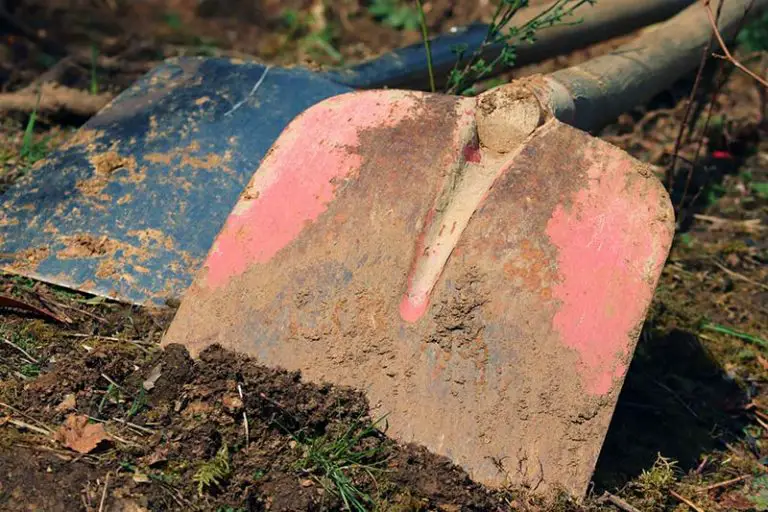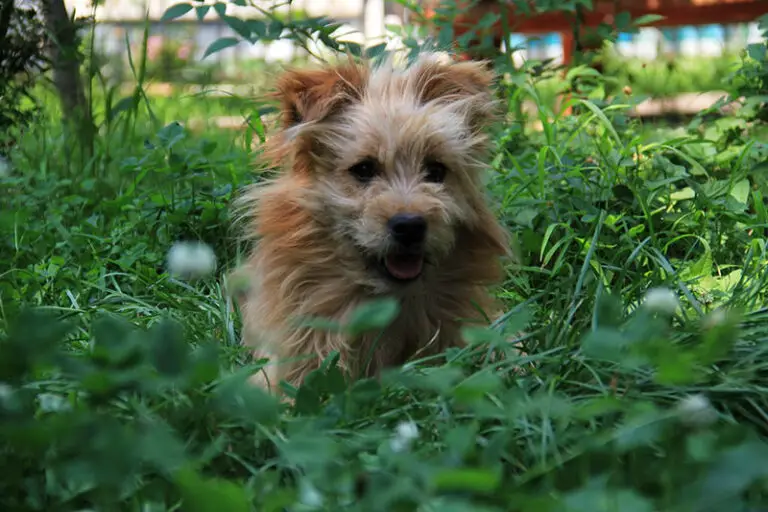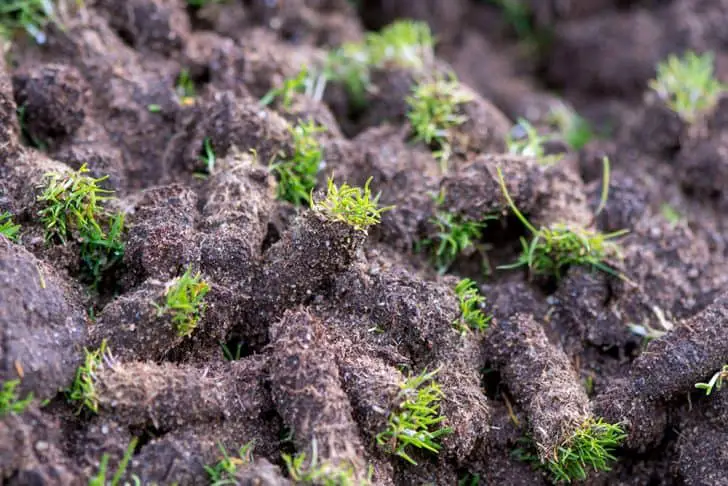Grow a Lush Lawn with the Best Soil for Grass
When you break it down, there’s much more to soil than meets the eye. Being composed of small particles of rocks, minerals, humus, water, and air, soil is a self-sustaining concoction of both living and dead materials. Determined by the natural landscape of the area, this composition varies from yard to yard, and therefore so do the properties of the different soil types. This makes some types of soil more suitable for growing grass than others.
Generally speaking, the best soil for growing grass is loamy soil. Due to its balanced composition of sand, silt, and clay particles, loamy soil is the best soil for growing most types of grasses and plants.
What is Soil?
Soil is the name for the top 6 to 8 inches of earth that contains a diverse balance of matter, both living and dead, that’s able to support life. In composition, soil is a mixture of rock particles, air, water, minerals, and decaying organic plant and animal matter. Healthy soil also contains a range of living organisms, from bacteria and fungi, to worms and other soil-dwelling creatures.
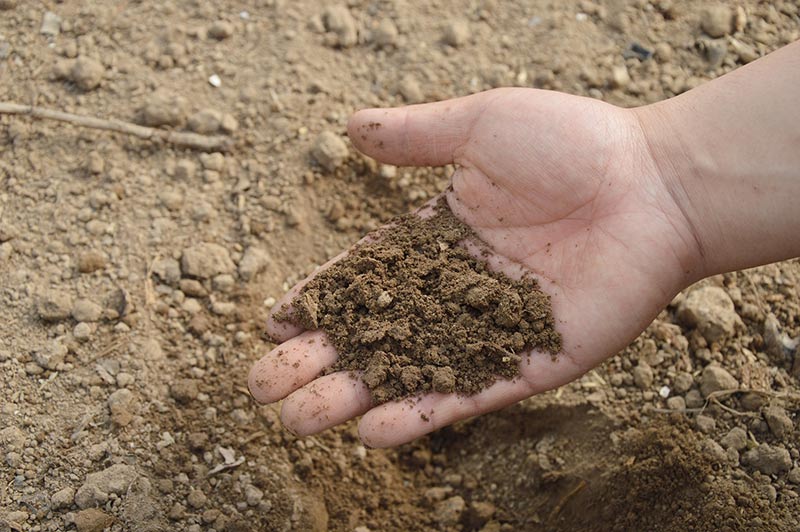
How Are There Different Types of Soil?
In the natural world, the formation of soil takes thousands up to millions of years to complete. To understand how different types of soil exist, you have to look right back to the first stage of this process. All soils that exist today originally started off as large rocks; over time, the large rocks were exposed to external conditions that broke the rocks down into smaller particles. This is known as ‘weathering’, i.e. the erosion of rocks due to natural physical, chemical, and biological processes.
Once the weathering process is complete, after a few thousand years, the large rocks eventually end up as what we consider to be ‘dirt’. This is a lifeless substance that contains no nutrients, water, or humus that isn’t able to support life. Before it becomes the growing medium that we know as soil, this dirt must go through another stage of the soil formation process; it mixes with humus, which is the name for organic matter such as dead leaves, twigs, and decaying animal carcasses. This matter brings life to the dirt by enriching it with nutrients and living organisms, transforming it into living soil.
The reason why different types of soils exist can be explained by the process detailed above. It all depends on the type of bedrock from which the soil was originally formed; for example, areas with a bedrock of limestone are more likely to have chalky soil, while it’s more common to have sandy soil if you live in an area near the coast.
Why Is it Important to Use the Right Soil for Growing Grass?
Due to having differing compositions, the structure and properties of different soils vary greatly between types. The way in which soils can vary includes their water-retention properties, drainage, and nutrient content. The properties of soil in these respects are dependent on the particular soil type’s structure.
Soil structure is the term that refers to the spatial arrangement of the soil’s particles. In other words, the structures of different soil types are dependent on how their particles of sand, silt, clay, and organic matter clump together into aggregates. The arrangement of these aggregates affects the movement of air and water through the soil. For instance, sandy soils have large particles, creating larger pores; this makes it easier for air and water to pass through the soil.
Because of this, some types of soil are better suited for growing grass over others. Depending on what grass species you’re trying to nurture, you need the right type of soil to give your grass the best growing conditions possible.
What Are the Different Types Of Soil?
There are six main types of soil that you can have on your lawn. These include sandy soil, clay-heavy soil, silty soil, peat soil, chalky soil, and loamy soil. We explain these different soil types in a bit more detail below.
1. Sandy Soil
Sandy soils tend to be light and gritty. They typically originate from bedrocks of granite, limestone, and quartz. Sandy soils are made of the largest particles compared to the other types of soil.
Sandy soils warm up quickly in spring and can be very easy to cultivate. They are well-draining and dry quickly after heavy rainfall or irrigation. The light texture of sandy soils also means they are typically well-aerated by nature.
However, these properties of sandy soil can also be the soil’s biggest drawback; the large, loose particles have a harder time retaining water and nutrients added from rainfall, irrigation, and fertilization. This can result in leaching and runoff, preventing essential water and nutrients from reaching the roots of your grass or plants. Sandy soils also tend to be too acidic for most types of plants.
The best grass types for sandy soil include bahiagrass, Bermuda grass, bentgrass, tall fescue, and zoysia.
2. Clay-Heavy Soil
Clay soils are the most dense type of soil, therefore they’re considered the most difficult type to work with. Clay soil is made of fine, clay-heavy, tightly packed particles; it is rock hard when dry, and sticky and lumpy when wet.
The biggest advantage of clay-heavy soils is that they hold on to water and nutrients for longer. However, due to this property, clay soils are prone to holding onto too much water for too long. This causes plant roots to become waterlogged and pushes essential air and nutrients out of the tightly packed soil. Clay-heavy soils also tend to be more alkaline on the pH scale.
The best grass types for clay-heavy soil include Bermuda grass, buffalograss, Kentucky bluegrass, tall fescue, perennial ryegrass, and zoysia.
3. Silty Soil
Silty soils are halfway between clay-heavy and sandy soils in their composition; being made up of rock and minerals, the particles are smaller than sandy soils but larger than clay-heavy soils. Silty soil is soft and floury when dry, and smooth and malleable when wet.
This type of soil possesses some of the benefits of both clay-heavy and sandy soils. Silty soil is highly fertile and easier to cultivate than clay-heavy soil, while having better water-retention properties than sandy soil. It has a smooth, fine texture that makes it an easy soil to work with.
With that said, the fine texture of silty soil also puts it at a disadvantage to other types of soils. Due to this texture, the soil particles are more prone to compaction and erosion from foot traffic or external weather conditions. There is also a tendency for a hard crust to form across the soil surface of silty soils.
4. Peat Soil
Peat is a spongy matter that is composed primarily of decomposing wetland plant materials. Therefore, soils high in peat are dark, and feel soft, spongy, and damp to the touch.
Due to their composition, peat-heavy soils are highly retentive of water and have a great structure for growing plants. However, without proper drainage, peat soils may become waterlogged from holding onto too much water. Also, peat soils tend to be highly acidic, causing them to have slower decomposition processes. In turn, this negatively affects nutrient availability in the soil to growing plants.
5. Chalky Soil
Chalky soils have a large-grained, stony texture. They form in areas that sit atop limestone or chalk bedrock and are rich in calcium carbonate.
The best feature of chalky soils is that they’re very well-draining, making them unlikely to become waterlogged or flooded. Despite the benefits of this property, it also means that chalky soils lose a lot of water and fertilizer to leaching.
Also, chalky soils are often unfavorable as they tend to be too alkaline for most plants. When soils are highly alkaline, the high pH affects the availability of iron and manganese to nearby grass and plants. The deficiency of these nutrients results in a condition known as ‘lime-induced chlorosis’, causing grasses to turn yellow and have stunted growth.
6. Loamy Soil
Loamy soil is made from an ideal balance of silt, sand, and clay particles. It has a fine texture and feels damp to the touch.
Loamy soil has the nickname ‘the gardener’s best friend’, as it is widely regarded as the best type of soil for growing grass and the majority of other plants. It provides the perfect growing medium due to its well-balanced composition; loamy soil has ideal drainage properties and tends to be highly fertile. It heats up quickly in spring, as well as retaining moisture effectively throughout the summer.
The only recommendation to improve the growing condition of loamy soil is to amend it regularly with organic matter. Loamy soil can be slightly acidic, but you can neutralize this with the addition of organic fertilizers or compost. The material most often used for this purpose is agricultural lime.
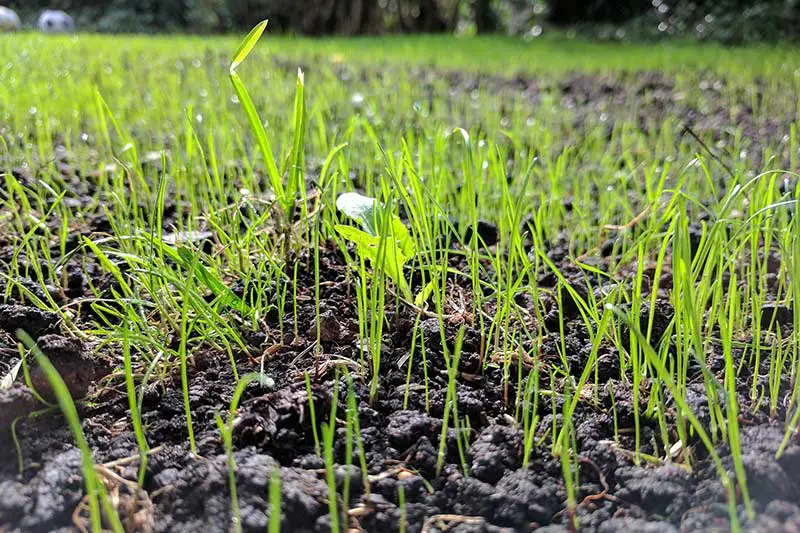
What Soil is Best For Growing Grass?
In general, the best soil for growing grass is loamy soil. For optimal growing conditions, the soil should contain a balance of 40% sand, 40% silt, and 20% clay, in proportions of weight.
Loamy soil with this balance of matter possesses all the best characteristics of each soil type it’s comprised of; as we’ve explained, it holds onto water and nutrients well, has excellent drainage properties, and is generally an easy type of soil to work with. The drawbacks of the individual soil types are negated as the different materials balance each other out. This makes loamy soil the ideal growing medium for the majority of grasses and plants.

